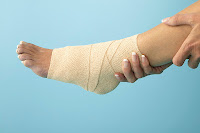Here is the final entry in our guest blogger series for this month from Carrie Covington. Remember, go back and check out Part 1, Part 2, and Part 3 before reading this blog.
You are making it worse.
If you had a disease and your doctor told you that you could take this certain medicine but it would actually make the disease worse, would you do it? I can guess everyone answered "no". Dieting is the same way. It is not a cure to our weight problem; it is part of the problem.
You are making it worse.
If you had a disease and your doctor told you that you could take this certain medicine but it would actually make the disease worse, would you do it? I can guess everyone answered "no". Dieting is the same way. It is not a cure to our weight problem; it is part of the problem.
Tip #5: Stop going on diets. Educate yourself on nutrients.
Learn what you need and when you need it. The key to losing weight is changing
your metabolism to burn more calories than you take in. Diets do the exact opposite.
When you restrict your calories too much, your metabolism slows down because your
body goes into “starvation mode”. This is a defense mechanism that allows our
bodies to survive on less. Your body will start using lean muscle as an energy
source and it will protect the fat stores. The less muscle we have, the lower our
metabolic rate will be and the less calories we burn. On the flip side for every pound
of muscle you have, you will burn 50 more calories.
If you are unclear on what a good nutrition plan is then seek help. Find a professional that can help you with a meal plan to help you lose weight without restriction. Include foods you enjoy and get plenty of variety. Combine your meal plan with a balanced exercise program and you will become healthy with the side effect of weight loss.
If you are unclear on what a good nutrition plan is then seek help. Find a professional that can help you with a meal plan to help you lose weight without restriction. Include foods you enjoy and get plenty of variety. Combine your meal plan with a balanced exercise program and you will become healthy with the side effect of weight loss.
Remember, the staff at PROMATx Health Club are here to help you but you have to take the first step. Make an appointment today to talk with our nutrition specialist. Find out how we can get you back on track and help you lose the weight. Then work with one of our trainers to get your body back in tip-top shape. You won't regret it...but you will have to work at it!!













